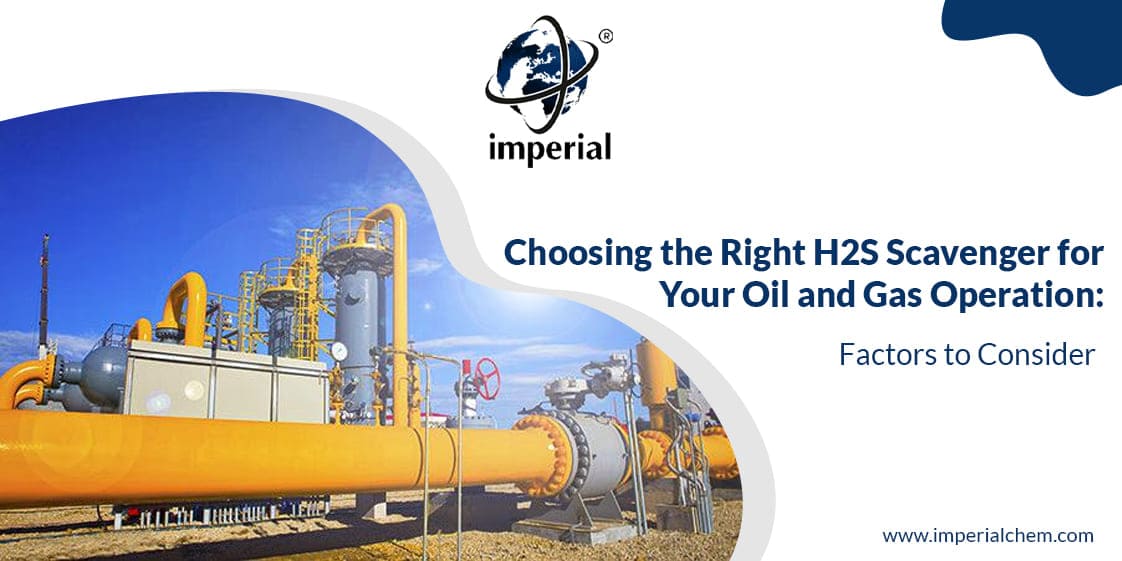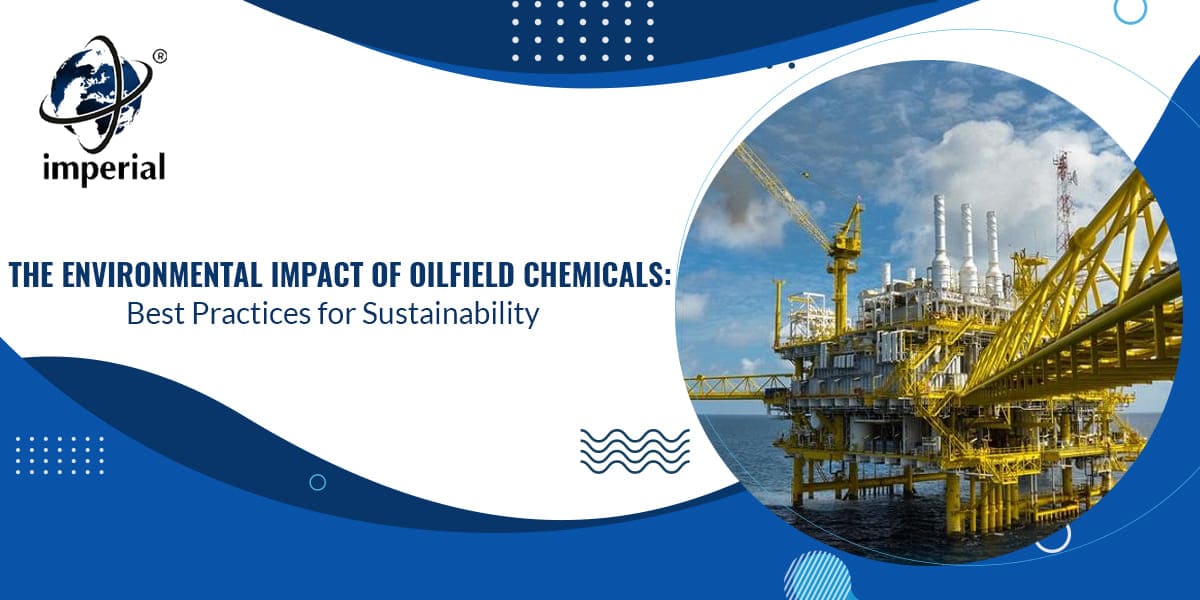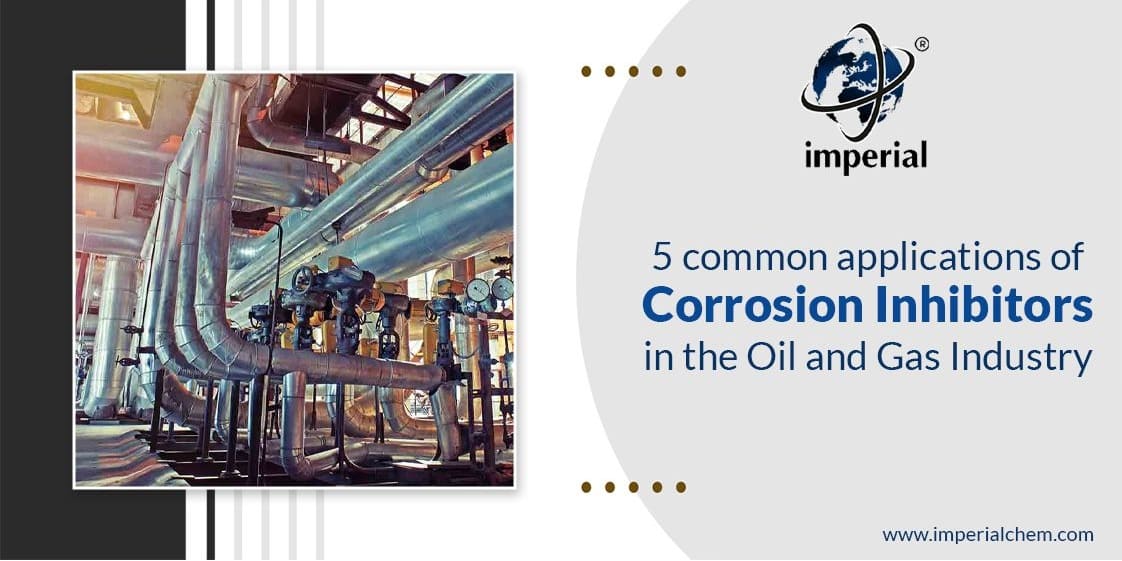- All Products
- Corrosion Inhibitor
- Oxygen Scavenger
- Drag Reducing Agent / Flow Improver
- H2S Scavenger
- Triazine
- Demulsifier
- Emulsion Breaker
- Surfactant
- Wax / Parrafin Disperssant
- Asphaltene Inhibitor

Blog Details

20
MAR
Choosing the Right H2S Scavenger for Your Oil and Gas Operation: Factors to Consider
Hydrogen sulfide (H2S) is a toxic gas that is often found in crude oil and natural gas reserves. In the oil and gas industry, it is important to remove H2S from these resources in order to protect workers, prevent corrosion in equipment, and meet regulatory requirements. This is typically achieved through the use of H2S scavenger chemicals.
There are several types of h2s scavenger Chemicals in Vadodara that are commonly used in the oil and gas industry, including:
● Triazine-based scavengers: These chemicals are highly effective at removing H2S from oil and gas streams. They work by reacting with the H2S to form stable, non-toxic byproducts.
● Amine-based scavengers: These chemicals work by reacting with H2S to form amine salts, which are then removed from the oil or gas stream.
● Iron-based scavengers: These chemicals react with H2S to form iron sulfide, which can be easily removed from the oil or gas stream.
● Zinc-based scavengers: These chemicals react with H2S to form zinc sulfide, which can also be easily removed from the oil or gas stream.
The choice of H2S scavenger chemical will depend on a variety of factors, including the composition of the oil or gas stream, the required level of H2S removal, and environmental considerations. It is important to work with a qualified chemical supplier or consultant to determine the most appropriate scavenger for a given application.
Factors to consider while choosing the right H2S Scavenger for your Oil and Gas operations:
Hydrogen sulfide (H2S) is a toxic and corrosive gas commonly found in oil and gas operations. It is highly flammable and poses a significant risk to personnel and equipment. To manage this risk, H2S scavengers are used to remove H2S from oil and gas streams. The right H2S scavenger supplied by Imperial Oilfield Chemicals - the most trusted h2s scavenger Chemical supplier in Gujarat is critical to ensuring safe and efficient oil and gas operations. In this blog post, we will discuss the factors to consider while choosing the right H2S scavenger for your oil and gas operations.
● Effectiveness:
The effectiveness of an H2S scavenger is a critical factor to consider. The scavenger should be able to effectively remove H2S from the oil and gas stream to ensure safe operations. The effectiveness of an H2S scavenger is typically measured by its H2S removal capacity, which is the amount of H2S that the scavenger can remove from a given volume of oil or gas. The H2S removal capacity is influenced by factors such as the concentration of H2S in the oil or gas stream, the temperature, and the pressure.
● Compatibility:
The compatibility of an H2S scavenger with the oil and gas stream is another important factor to consider. The scavenger should be able to work effectively with the specific characteristics of the oil and gas stream, such as its pH, temperature, and pressure. In addition, the scavenger should not react with other components in the oil and gas stream, which could lead to undesirable by-products or cause damage to equipment.
● Safety:
The safety of personnel and equipment is paramount in oil and gas operations. The H2S scavenger selected should be safe to handle and use. It should not pose a hazard to personnel or the environment. It is important to consider the potential hazards associated with the handling and use of the scavenger, such as toxicity, flammability, and corrosivity.
Make your operations safer with quality h2s Scavenger solutions manufactured and supplied by Imperial Oilfield Chemicals - a reliable h2s scavenger Chemical supplier in Gujarat.
● Cost:
The cost of the H2S scavenger is an important consideration. The cost of the scavenger can impact the overall cost of oil and gas operations. While it is important to consider the cost, it should not be the only factor considered. A cheaper scavenger may not be as effective or safe as a more expensive option.
● Environmental Impact:
The environmental impact of the H2S scavenger is another factor to consider. The scavenger should not have a negative impact on the environment or contribute to pollution. It is important to consider the disposal of the scavenger and any by-products that may be generated during its use.
● Storage and Handling:
The storage and handling requirements of the H2S scavenger should also be considered. The scavenger should be easy to store and handle, and should not require specialized equipment or facilities. The handling of the scavenger should not pose a risk to personnel or the environment.
● Ease of Use:
The ease of use of the H2S scavenger is an important consideration. The scavenger should be easy to use and integrate into existing oil and gas operations. It should not require significant changes to existing equipment or processes.
● Regulatory Compliance:
Regulatory compliance is an important factor to consider when choosing an H2S scavenger. The scavenger should meet all applicable regulatory requirements and standards. It is important to consider the regulatory requirements for handling and disposing of the scavenger, as well as any reporting requirements.
● Technical Support:
Finally, the availability of technical support should be considered when choosing an H2S scavenger. Technical support can help ensure the effective use of the scavenger and troubleshoot any issues that may arise. It is important to consider the availability and expertise of technical support when selecting a scavenger.
Final Thoughts:
Choosing the right h2s scavenger Chemical in Vadodara is critical to ensuring safe and efficient oil and gas operations. The effectiveness, compatibility, safety, cost, environmental impact, storage and handling, ease of use, regulatory compliance, and technical support are all important factors to consider when selecting a scavenger. A thorough evaluation of these factors can help ensure that the selected scavenger is the best fit for the specific oil and gas operation. It is important to prioritize safety and effectiveness over cost and convenience, as the consequences of an ineffective or unsafe scavenger can be severe.











